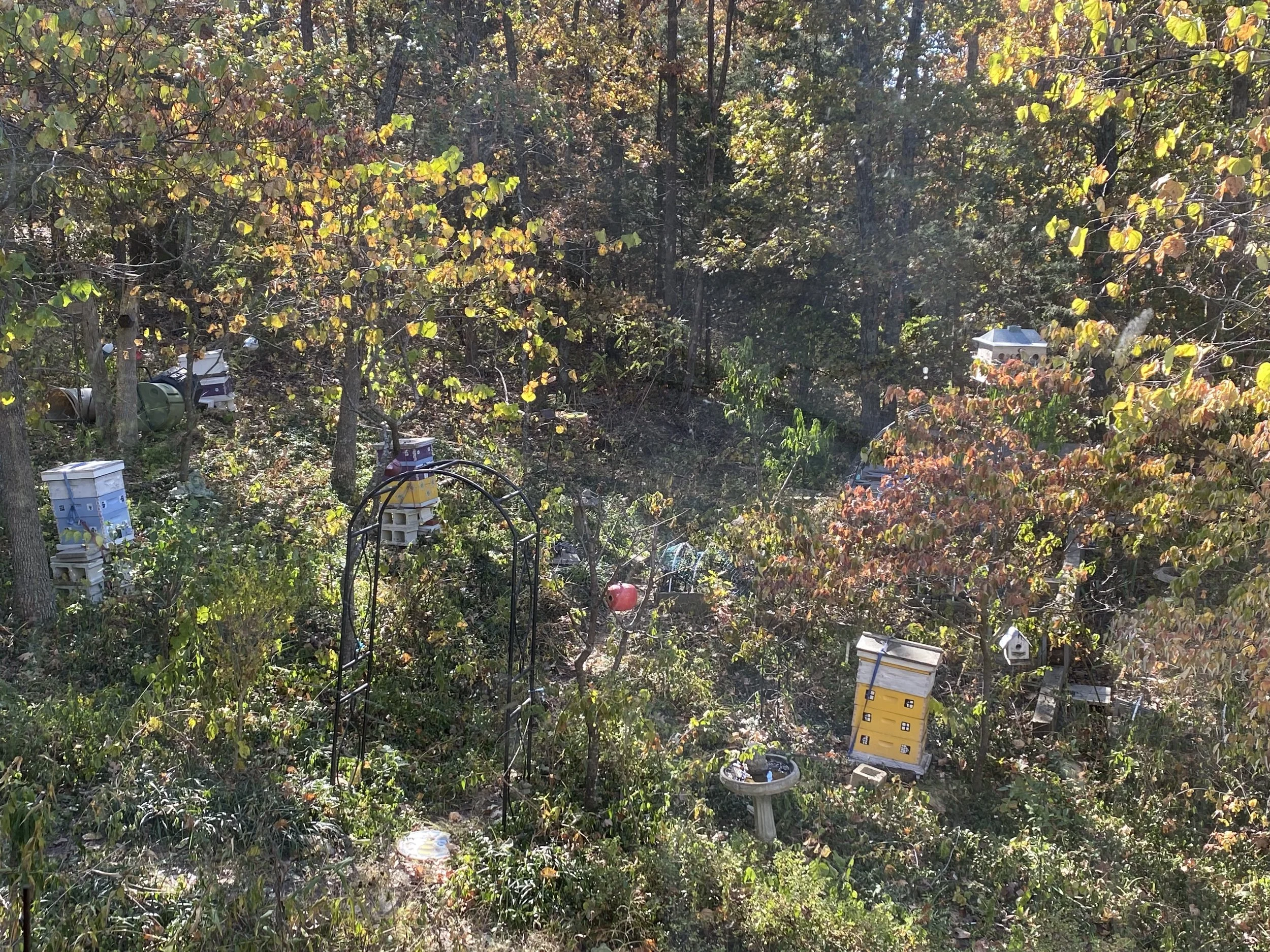March Gardening Chores
/Birdhouses undergoing repairs are drying in the sun before I put them back out in the garden. Repairing birdhouses are one of the many traditional March gardening chores I look forward to getting ready for spring.
March Gardening Chores
This is the month when I am ready to push my potted plants wintering inside out but in my heart I know it’s too early, our last frost day is supposed to be in May.
This year, though, everything seems to be at least one month ahead of schedule. According to the USA National Phenology Network, spring IS a good 3 weeks ahead of schedule for mid-Missouri, a trend forecasted as our rapidly changing climate alters traditional weather patterns and seasons. Phenology is nature’s calendar – when dogwood’s bloom, when a robin builds a nest, when leaves turn color in the fall. These trends gardeners, beekeepers, farmers and others have followed for centuries are now followed by a network. The phenology network combines professionals and citizens collecting a variety of data to monitor signs in nature to better identify trends.
With this shift in what to expect, I have also adjusted a few of my traditional March gardening chores but not enough to take a chance on putting my inside plants outside for the season.
1. Check inside potted plants, trimming and shaping so they are ready to go outside. Prune limbs back at least a third, and remove any criss-crossing branches. I also start feeding them diluted fertilizer, a pinch per gallon of water so they can start growing again.
2. Prune outside roses. Remove dead branches first, then remove any dead canes down to the green.
3. Plant onion sets, lettuce, spinach, radishes; I start those in my pots so I can easily cover them if there’s an evening cold spell.
4. You can also plant broccoli and cauliflower, and I like having snow peas to harvest and individually freeze for later use. Snap peas also prefer cooler spring weather. At the rate we are going with record warm spring temperatures, we may have skipped a long cool spring period this year.
My compact pear tree off my deck is getting ready to bud almost a month earlier than in past years. Watching when trees bud is part of what scientists and citizens in the phenology network to do track nature’s seasonal trends. This year, they confirm spring is 3 weeks ahead of schedule in our part of the country.
5. Plant potatoes on St. Patrick’s Day. The trick to planting potato seeds is to cut seed potatoes and let them sit out for 2-3 days to first develop a callous before planting. If you immediately plant, the potato seed piece disintegrates before the potato start can develop roots.
6. Start herbs, tomatoes, peppers and other seeds in starter pots you want to harden off later before planting outside.
7. There’s no more putting this one off, if you leave your garage door open, even for just a few minutes, birds will let you know they are shopping for real estate and they will not be waiting any longer. I usually make repairs – gluing is usually involved – then let that sit for a few days to dry before painting. I also let the paint dry for another few days before taking the birdhouses back out into the garden.
8. Don’t trim your mums yet, leave the dry tops for late frost protection.
9. Mark where bulbs are popping up so you don’t do what I do and try to plant something there later. Oh, never mind, it’s like finding treasure.
10. Enjoy spring, it's the season of growth and renewal!
Charlotte






















































